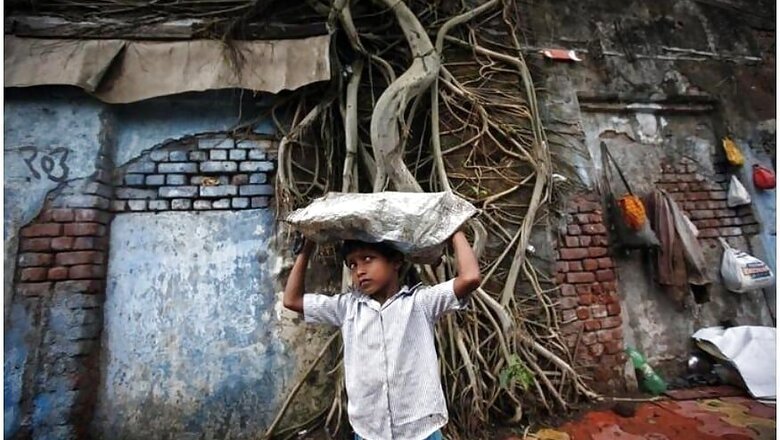
views
The lockdown and subsequent relaxations in labour laws are likely to lead to an increase in hazardous work for children and adolescents in the coming months and an increase in child trafficking, a technical analysis done by Child Rights and You (CRY) in collaboration with a faculty member of the Tata Institute of Social Sciences (TISS) has found. The report was released a day before June 12, which is commemorated globally as ‘World Day Against Child Labour’.
The report states that the labour law relaxations “may lead to increase in hazardous work and other forms of child labour, including force labour, debt bondage and child trafficking”.
The analysis found that barring West Bengal and Bihar, the remaining eight states which have the highest burden of child and adolescent labour in India, such as Madhya Pradesh and Uttar Pradesh, have relaxed their labour laws. And this will see an increased insecurity and informalisation of labour, loss of bargaining power among labourers and deterioration in working conditions, it said.
Responding to the fears of a possible increase in child labour and child trafficking, Priyank Kanoongo, chairperson of National Commission for Protection of Child Rights (NCPCR), said it was looking at the situation after lockdown as an opportunity.
“We see the situation right now as an opportunity, to see to it that the children who have moved out of factories where they used to work, do not return to those factories. We want to use this opportunity to encourage such children to attend schools,” Kanoongo said.
The report also quotes from a recent letter written by a senior official of the International Labour Organisation (ILO) in which its Director-General expressed ‘deep concern’ at the alterations made to the labour laws. The report prepared jointly by CRY and Rahul Sapkal, assistant professor at TISS, noted that already 2.7 million adolescents were estimated to be engaged in hazardous processes.
In a separate statement, CRY said "there are high chances that child labour in home-based enterprises, agriculture and in hazardous occupations may see a steep rise in the coming months".
The NGO said the children are likely to be pushed into unskilled labour “to compensate for the economic loss and to supplement dwindling family income, especially the older children, who are experiencing the struggle of their families and loss of livelihood. In all likelihood, these children may choose to work instead of study to help their families in future”.















Comments
0 comment